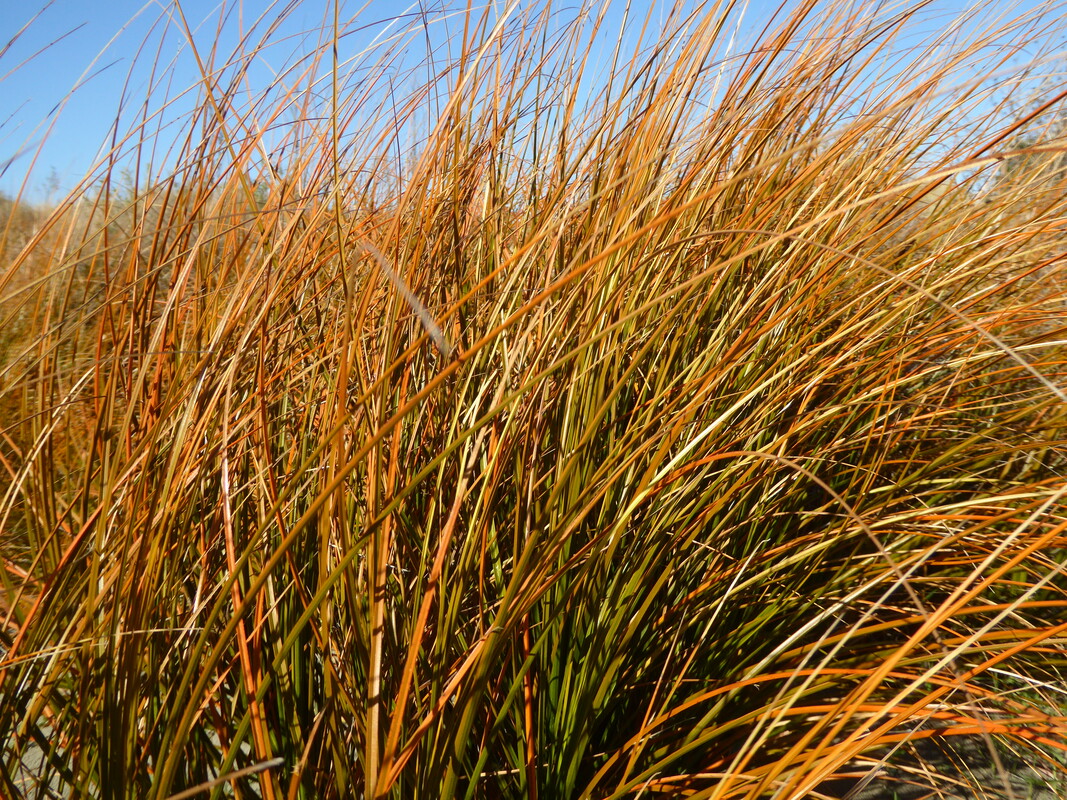

It has legends associated with it and is highly prized as a weaving material. Combined Australian Coastal Engineering and Ports Conference, Christchurch, New Zealand.Pikao has a strong cultural, spiritual and traditional significance to Maori.

Revegetation of Coastal Sand Dunes in New Zealand using Indigenous Species. Paper accepted for The Pacific Coasts and Parks Conference, 7-11 Sept.

Managment of Marram Grass in the Resoration of Indigenous Coastal Dune Vegetation in Australia and New Zealand. O., FitzSimons, P., Freeman, C., Herbert, J. Paper for the Forth Annual New South Wales Coastal Management Conference, 18-20 Oct, Gosford, Australia. Resoration of native plant communities on sand dunes in New Zealand. Ecology and management of invasive weeds. (1994).Setting priorities for the conservation of New Zealand threatened plants and animals. Environmental Science, University of Otago, New Zealand. Impacts of Ammophila arenaria on indigenous dune communities in Mason Bay, Stewart Island. Guidelines for seed collection, propagation and establishment. Aspects of the ecology of Desmochoenus spiralis (A. The return of pikao as the major dune plant appearing on our local beaches is far off, but the commitment to manage pikao appropriately exists and all that is required now is YOU!!! The future of New Zealand conservation lies with the community as government bodies and NGO's are unlikely to have the resources to support the growing number of conservation problems. This is largely due to the hard work and commitment of coast and dune care organisations as well as DOC, territorial authorities and other governmental organisations such as the New Zealand Forest Research Institute via the Coastal Dune Vegetation Network (CDVN). Pikao is slowly being re-established and maintained in small pockets around the country. The demise of pikao can be attributed to human activity fire, grazing and trampling by stock and rabbits, vehicle damage, the introduction of marram grass (a highly competitive sand binding grass 7) and the continues pressure and demand for coastal land 2,3,8,9,10. Pikao's conservation priority status is ranked M, being a species that is rare or localised and of cultural significance to Maori 6. Pikao has considerable cultural significance 5 and for this reason it is viewed as a good species to foster relations between iwi and the crown in order to meet the obligations under Section 4 of the Conservation Act (1987) "to give effect to the principles of the Treaty of Waitangi". Consequently much of our native coastal biodiversity depends largely on the presence of pikao 4 to form the coastal geomorphology (beach shape created by geological forces) to which those species are adapted. The coastal morphology that pikao created, provided a habitat within which other native coastal species were able to settle, adapt and flourish. The sand dunes that consequently form are (usually) low, undulating active dunes, allowing continuous sand movement around the plants, which pikao requires to survive 2,3. Pikao stabilise the sandy coast by trapping wind blown sand between its leaves and around the base of the plant and the long rope-like rhizomes it sends out 2,3. Pikao is found only in New Zealand and is one of our major native dune builders 2. Stunning Pikao stands would have once have been found on almost every sandy beach, from Northland to Rakiura (Stewart Island) and the Chatham's 1,2,3 but is now only found in a few remnant populations or where active replanting programmes have been established. Pikao is a native sand-binding sedge, coloured a brilliant green and golden yellow or fiery orange.


 0 kommentar(er)
0 kommentar(er)
